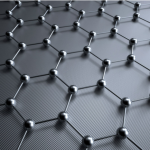Engineering Materials Objectives Part 02
21 . If a piece of metal is made to have a temperature gradient between its two ends, an
e.m.f is observed to exist between those ends. The above phenomenon is known as
“Thomson effect”.
22 . The atomic radius for simple cubic lattice is “a/2”.
23 . The materials which undergo recoverable deformation and exhibit rubber-like
elasticity are called “Elastomers”.
24 . The materials which exhibit the same elastic properties in all directions are called
“Isotropic”.
25 . Aluminium wire” is expected to be strongest in tension.
26 . Electron” is the heaviest.
27 . Magnesium oxide” MgO is a ceramic material.
28 . Poorest conductor of electricity is “Carbon”.
29 . Bimetallic” type of thermostat is generally used in appliances with heating elements.
30 . Manganin” has zero temperature coefficient of resistance.
31 . Bakelite is “uncombustible”.
32 . Insulating material used in spark plugs is “Porcelain”.
33 . When a loop composed of two dissimilar metals could be made to carry a continuous current simply by maintaining the two junctions at different temperatures, the effect is known as “Seeback effect”.
34 . Thermocouple works on “Seeback effect”.
35 . When a current is passed through the junction of two different metals, heat is absorbed for liberated depending on the direction of the current, the phenomenon is known as “Pltier effect”.
36 . Copper constantan” pairs is commonly used in thermocouples.
37 . The property of materials by which they can be drawn into wires is known as
“ductility”.
38 . Dielectric constant for vacuum is “1”.
39 . For most of the solid substances, the value of dielectric constant is “between 1 and 10”.
40 . Electric stress is expressed in terms of “kV/cm”.


